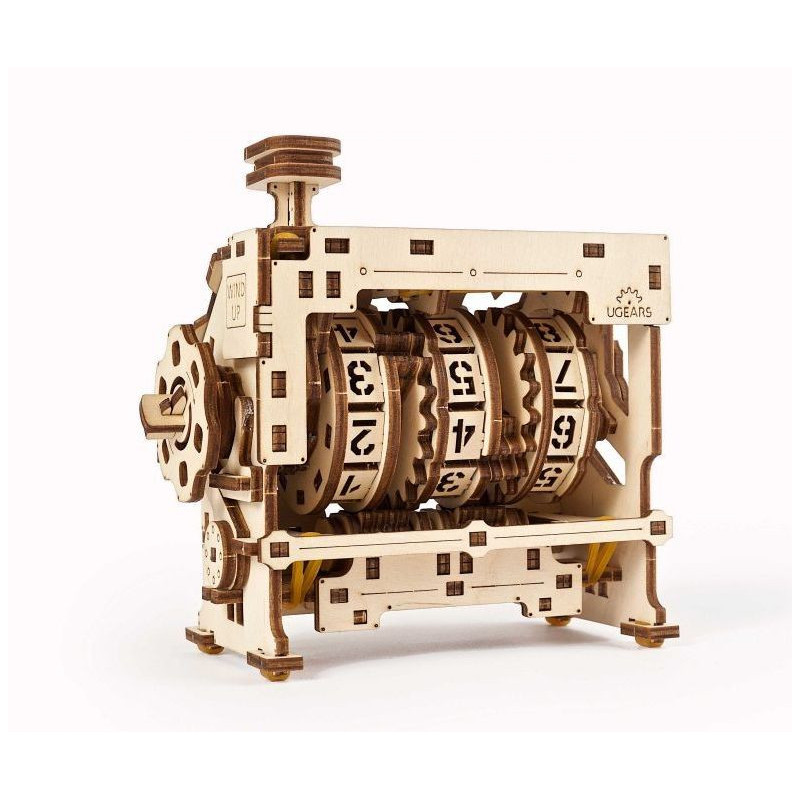EDUCATIONAL STEM LAB MECHANICAL MODEL TO ASSEMBLE
Assemble the model and discover the principle of the three-digit counter.
Experiment: included is a pocket guide with the history of the creation of the counter and interesting tasks.
Immerse yourself in virtual reality and learn how the Meter works in the production lines; test how the meter works using the dedicated UGEARS AR app.
With the dedicated app, you will be able to get an even better understanding of the built model.
UGEARS AR is available in the Google Play Market and Apple Play Store.
LEARN HOW THE METER WORKS
The odometer records repetitive activities. It is an integral part of the odometer. The model features 3 cylinders numbered from 0 to 9, as well as a Maltese mechanism. This configuration will allow you to observe a mechanical curiosity: as you press the button from the Maltese mechanism, the design will set the cylinders with numbered gears in motion. The counter has 2 options for recording data: either by pressing the button on top of the model, or by turning the dial on the side. Pressing the button or turning the knob makes the abacus jump one place. When the number exceeds 9, the Maltese mechanism activates another register cylinder and adds it to the count.
In total, the three-digit Counter model can present a range of numbers from 1 to 999. To reset the result, just open the front panel. You can try counting the steps as you walk home. Or determine the number of pedestrians you encounter in the park. You can also count the number of blue cars passing by your house in an hour. Count the steps at home, at school or at a friend's apartment.
THE COUNTER MECHANISM CONSISTS OF:
- Button that saves the value
- Gear cylinder with numbers
- Maltese mechanism
- A dial that saves the value
A BIT OF HISTORY, WHO INVENTED THE COUNTER AND WHEN ?
The counter as part of the odometer was invented by the ancient Greek mathematicians and engineer Hera of Alexandria, who lived between 10 - 70 AD. It allows you to measure the length of a road by counting the number of turns of the wheel in the mechanism. Later, the abacus was improved by adding a reducer, which made it possible to reduce the number of wheel revolutions and thus, adjust the abacus to different numerical units(miles, kilometers) and show the calculated result.
APPLICATIONS:
The abacus is currently used to determine the number of passengers, visitors to various events, cars passing through a place, points and scores in matches or items on a production line
Additional information:
- Difficulty level: 2 easy
- Number of parts: 157
- Dimensions of the model: 14 x 7 x 12 cm
- Assembly time: 1 - 2 hours












